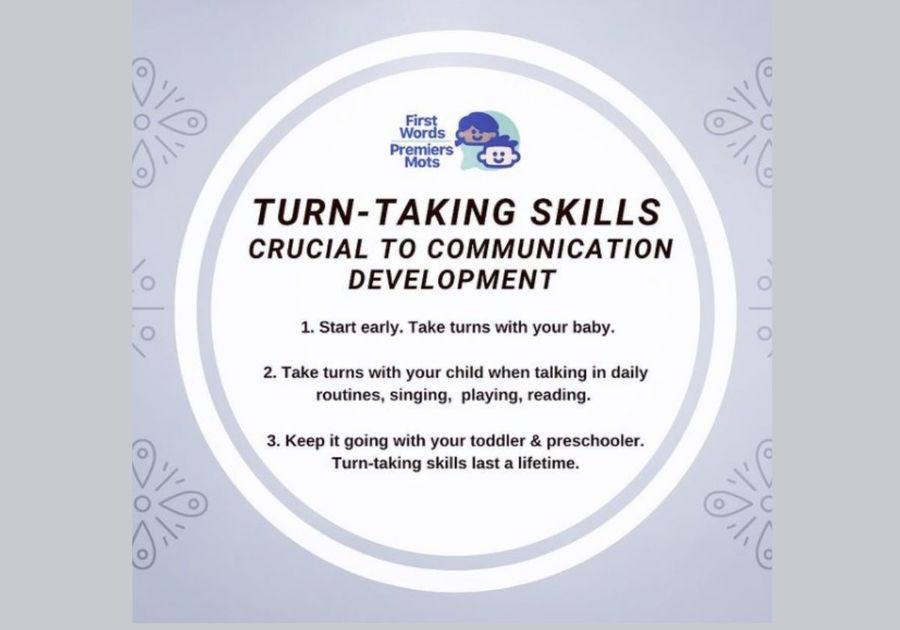Communication starts at birth. Parents who talk to their baby, observe, follow, and play with their children play a crucial role in supporting communication development. One important skill is turn-taking. Turn-taking skills are an integral part of communication in young children.
What exactly is “turn-taking” skills?
Turn-taking skills can be compared to the ultimate “ping-pong” communication game. It involves the back-and-forth interaction between two people, between you and your child. Turn-taking skills are the foundation to healthy attachment and communication skills. Turn-taking skills are built into “serve-and-return” interactions that are so important to build a child’s brain. When you and your baby are actively engaged and practice taking turns during sound play imitation, a peek-a-boo game, chatting, you are laying the foundation for later conversation.
Turn-taking starts early: Initially, babies learn to communicate primarily to connect with you, parents, and mostly, have their needs met. At first, babies may not understand much of the words we use and how to communicate. But as we continue to talk to them, tune in, interpret their wiggles and giggles, babies learn about sounds, words but also about the logistics of communication when we talk to them. They learn about the world by hearing you talk.
Turn-taking skills are learned at play and in conversation: Children need to hear language to learn language. Be responsive to your baby right from birth – when you respond to their reflexive crying, you are showing your baby how to become an intentional communicator (e.g., you cry = I pick you up, you wiggle = I sing once more, you cry again = I feed you). When you tune in to your child and talk to your little one in routines (e.g., while you are feeding, bathing, or changing them), you are helping them build their communication. By tuning into your baby and waiting for them to respond, you are building opportunities for your child to take turns.
Get your child to take a turn: First, tune into your child’s. Look at their arousal level, their activity, play, or interest. Follow their lead and then, wait. Here are ways to do this:
- Get the conversation going: label a toy, describe your child’s play, or what you see. In plain language: “say something about what’s going on right now.”
- Talk then wait …. Wait a little bit longer to give your child plenty of time to take a turn. Try counting to 5, or even 10, in your head.
- Give your child nonverbal cues to let them know you are waiting for them to take a turn. Be face to face and…
- lean towards your child
- wait expectantly: open your eyes wide and raise your eyebrows
- smile encouragingly
- At other times, verbally cue your child by saying « It’s your turn » and « it’s my turn ».
Remember, taking turns is not only done with words, sentences, and long monologues. Turn-taking can consist of sounds, wiggles, words, gestures, or signs. If your baby is wiggling after you stopped singing “Row your boat”, it’s probably their way to let you know that they want to hear the song once more.
***Follow us next week for Part 2: PLAY GAMES TO BUILD STRONG TURN-TAKING SKILLS WITH YOUR CHILD
For more resources and strategies, visit the First Words website at www.firstwords.ca. Take a look at the following:
- Our free online screening & referral tool: First Words Communication Checkup tool
- Webinar: “Module 4: Strategies” on the First Words website.
Recognizing speech and language problems early on is the best approach!
Check out our First Words Communication Checkup tool to know if your child is
meeting communication milestones. Refer online if necessary. For more information, visit
www.firstwords.ca or call Ottawa Public Health at (613) PARENTS.
Looking for more family-friendly ideas? Subscribe now for a free newsletter
and event calendar! You'll be glad you did ... and so will your kids!
For even more fun, find us on Facebook, Twitter and Instagram.


